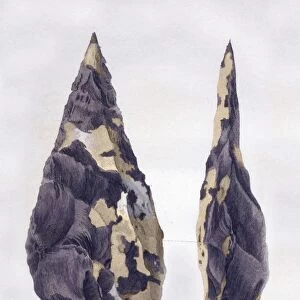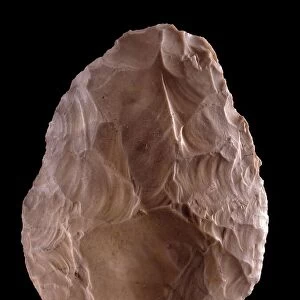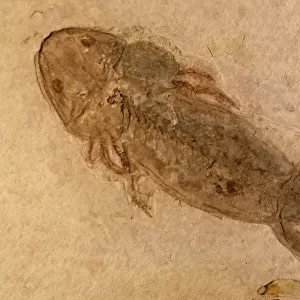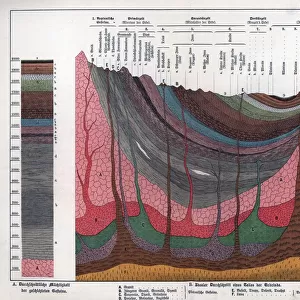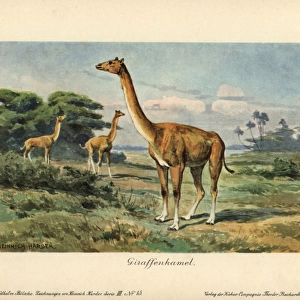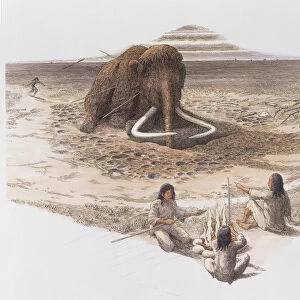Home > Arts > Artists > P > those present
1797 First Handaxe John Frere of Hoxne 1
![]()

Wall Art and Photo Gifts from Science Photo Library
1797 First Handaxe John Frere of Hoxne 1
Page 204 and engraving XIV by John Frere in Archaeologia 13, 1800. In June of 1797 Frere wrote to the Society of Antiquaries describing that, in the same month, he had observed men digging clearly man-made implements from a Hoxne brick-clay pit. They were found, he reported, below a stratum containing " some extraordinary bones, particularly a jaw bone of enormous size, of some unknown animal". It led him to conjecture that these " weapons of war, fabricated by a people who had not use of metals" belonged to " a very remote period indeed; even beyond that of the present world". His observations were published in the societys journal (this image). They were forgotten until 1859 when the archaeologist John Evans rediscovered the handaxes while making the case for the antiquity of man based on findings in France. The axes are in the British Museum today. Mary Leakey is a descendant of Frere
Science Photo Library features Science and Medical images including photos and illustrations
Media ID 6318455
© PAUL D STEWART/SCIENCE PHOTO LIBRARY
Acheulian Antiquity Archaeology Biface Early Man Flint Hand Axe Heidelbergensis Homo John Evans Palaeolithic Paleolithic Pleistocene Pre Historic Stone Age Stone Tool Weapon Hoxne Leakey Society Of Antiquaries
EDITORS COMMENTS
This print showcases the remarkable "1797 First Handaxe" discovered by John Frere of Hoxne. In a letter to the Society of Antiquaries, Frere described his awe-inspiring encounter with men unearthing man-made implements from a brick-clay pit in June 1797. Beneath these tools lay an intriguing layer containing extraordinary bones, including a massive jawbone from an unknown creature. This astonishing find led Frere to speculate that these ancient "weapons of war" crafted by people devoid of metalworking abilities, belonged to an era far beyond our current world. Frere's groundbreaking observations were published in Archaeologia 13 in 1800, depicted beautifully within this image. However, they remained forgotten until archaeologist John Evans rediscovered them in 1859 while advocating for the antiquity of humankind based on discoveries made in France. Today, these handaxes are housed at the esteemed British Museum and serve as a testament to our ancestors' ingenuity during prehistoric times. It is worth noting that Mary Leakey, renowned for her contributions to paleoanthropology and descendant of John Frere himself, holds a significant connection to this historical artifact. The photograph captured by Paul D. Stewart allows us to marvel at the intricate details and craftsmanship exhibited by early humans through this stone weapon—a tangible link connecting us with our ancient past and reminding us of humanity's journey throughout time.
MADE IN THE USA
Safe Shipping with 30 Day Money Back Guarantee
FREE PERSONALISATION*
We are proud to offer a range of customisation features including Personalised Captions, Color Filters and Picture Zoom Tools
SECURE PAYMENTS
We happily accept a wide range of payment options so you can pay for the things you need in the way that is most convenient for you
* Options may vary by product and licensing agreement. Zoomed Pictures can be adjusted in the Cart.


